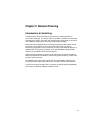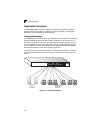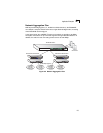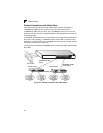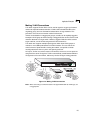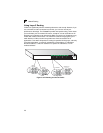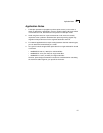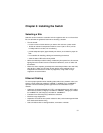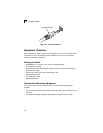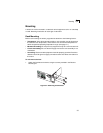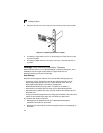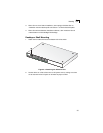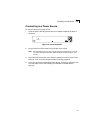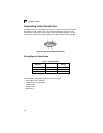
3-1
Chapter 3: Installing the Switch
Selecting a Site
Switches can be mounted in a standard 19-inch equipment rack or on a flat surface.
Be sure to follow the guidelines below when choosing a location.
• The site should:
• be at the center of all the devices you want to link and near a power outlet.
• be able to maintain its temperature within 0 to 50 °C (32 to 122 °F) and its
humidity within 5% to 95%, non-condensing
• provide adequate space (approximately two inches) on all sides for proper air
flow
• be accessible for installing, cabling and maintaining the devices
• allow the status LEDs to be clearly visible
• Make sure twisted-pair cable is always routed away from power lines, fluorescent
lighting fixtures and other sources of electrical interference, such as radios and
transmitters.
• Make sure that a separate grounded power outlet that provides 100 to 240 VAC,
50 to 60 Hz, is within 2 m (6.5 feet) of each device and is powered from an
independent circuit breaker. As with any equipment, using a filter or surge
suppressor is recommended.
Ethernet Cabling
To ensure proper operation when installing either switch into a network, make sure
that the current cables are suitable for 10BASE-T, 100BASE-TX or 1000BASE-T
operation. Check the following criteria against the current installation of your
network:
• Cable type: Unshielded twisted pair (UTP) or shielded twisted pair (STP) cables
with RJ-45 connectors; Category 3 or better for 10BASE-T, Category 5 or better
for 100BASE-TX, and Category 5 or better for 1000BASE-T.
• Protection from radio frequency interference emissions
• Electrical surge suppression
• Separation of electrical wires (switch related or other) and electromagnetic fields
from data based network wiring
• Safe connections with no damaged cables, connectors or shields



